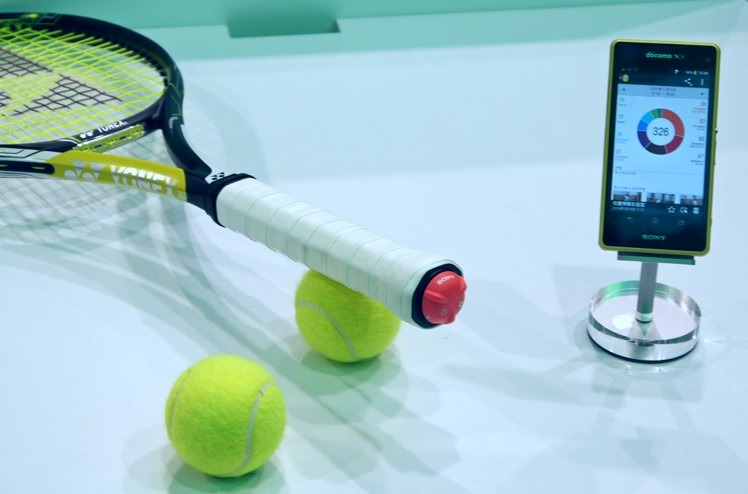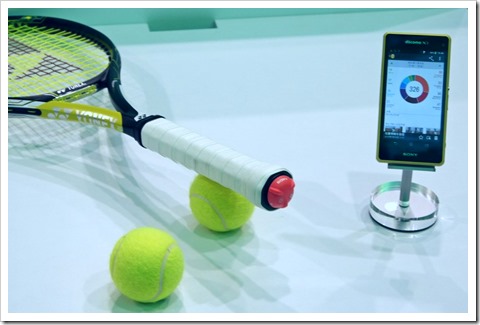
As a recreational tennis player, I know how difficult it can be for players to gauge their progress. Any tennis player, if they be amateur or professional, will admit that the quality of their play can be erratic. Moreover, a bad run of form can lead even the most optimistic player to question if they are really improving or just getting worse. [updated 18 August 2016]
Despite friends, opponents and coaches reassuring us that improvements are being made, it is often the case that we don’t believe them or are incapable of considering their unbiased input because we are too caught up in our own disgust at our performance. So, when I heard about Sony’s Smart Tennis Sensor, a device which objectively records statistics regarding play from the handle of your own racket, I knew I had to give it a short.
With the beginning of the tennis season fast approaching, where Novak Djockovic is the 5/4 favourite to win the year’s first Grand Slam at the Australian open according to Bet365, I thought it was the perfect time to analyse my game.
The Sony Smart Tennis Sensor (SSTS) is a small, red device that easily clips on to the bottom of the racket’s handle. Although I was slightly concerned that this additional weight would somehow negatively effect my swing or touch, I soon discovered that the addition of the SSTS had no impact upon my play.
My racket felt exactly the same as normal and I soon forgot about the technological parasite at it’s base. The data that the SSTS stores can be viewed via two means. Either you can have the statistics beamed straight to your phone or, if you don’t fancy analysing your performance on your mobile, the device can be plugged into any computer to upload its findings.
The SSTS accurately records your swing speed, ball speed and top-spin rotation. This data is an excellent, if slightly soul-destroying, way to compare your own game to that of the pros. Whilst I sadly discovered that my, previously thought, powerful forehand was still a good 15 miles slower then even the most defensive of pros, it did however give me a speed target to consistently practice towards.
Another great way to utilise the SSTS is to examine how good your stamina is. The device will compile information regarding your entire training session or match, so you will be able to see how your performance changes over the duration. I discovered that even after 10 minutes of play my ball speed began to fall and, moreover, that my ball spin increased as I compensated for my falling energy levels. Whilst not exactly a welcome discovery, it certainly got me back in the gym come monday.

[image from http://www.yonex.co.jp/}
Another excellent feature of the SSTS is that it is able to record the total of each individual shot you make during a match, the device even being able to tell the difference between slice, flat and topspin shots. This is an excellent way to work out which shots you may be over favouring or vice-versa. An interesting comparison for me was to compare my shot selection, and statistics, between practice and real matches.
I was always aware that my two-handed backhand, which has never been my strength, was somewhat sidelined during match play as I occasionally lose faith in this shot and opt for a safer slice. However, when checking out the stats, I was shocked by just how little I attempted a non-slice backhand which may explain why the shot was not improving as much as I would like.
Overall, this device is an excellent aid for tennis fans of all levels but, if you wish it to go beyond mere novelty value, it is best utilised within a training context. Not only is it incredibly gratifying to see your statistics improve but it is surprising just how often that the SSTS will pick up on something that neither you or your coach had noticed.
- Zobi Hedgehog -The Security Guard for Your IT Devices - May 30, 2021
- Technological advances in interactive experiences leading the way in video games - March 15, 2021
- Technological advancement leads the way in most recent evolution in online gaming - September 15, 2020











